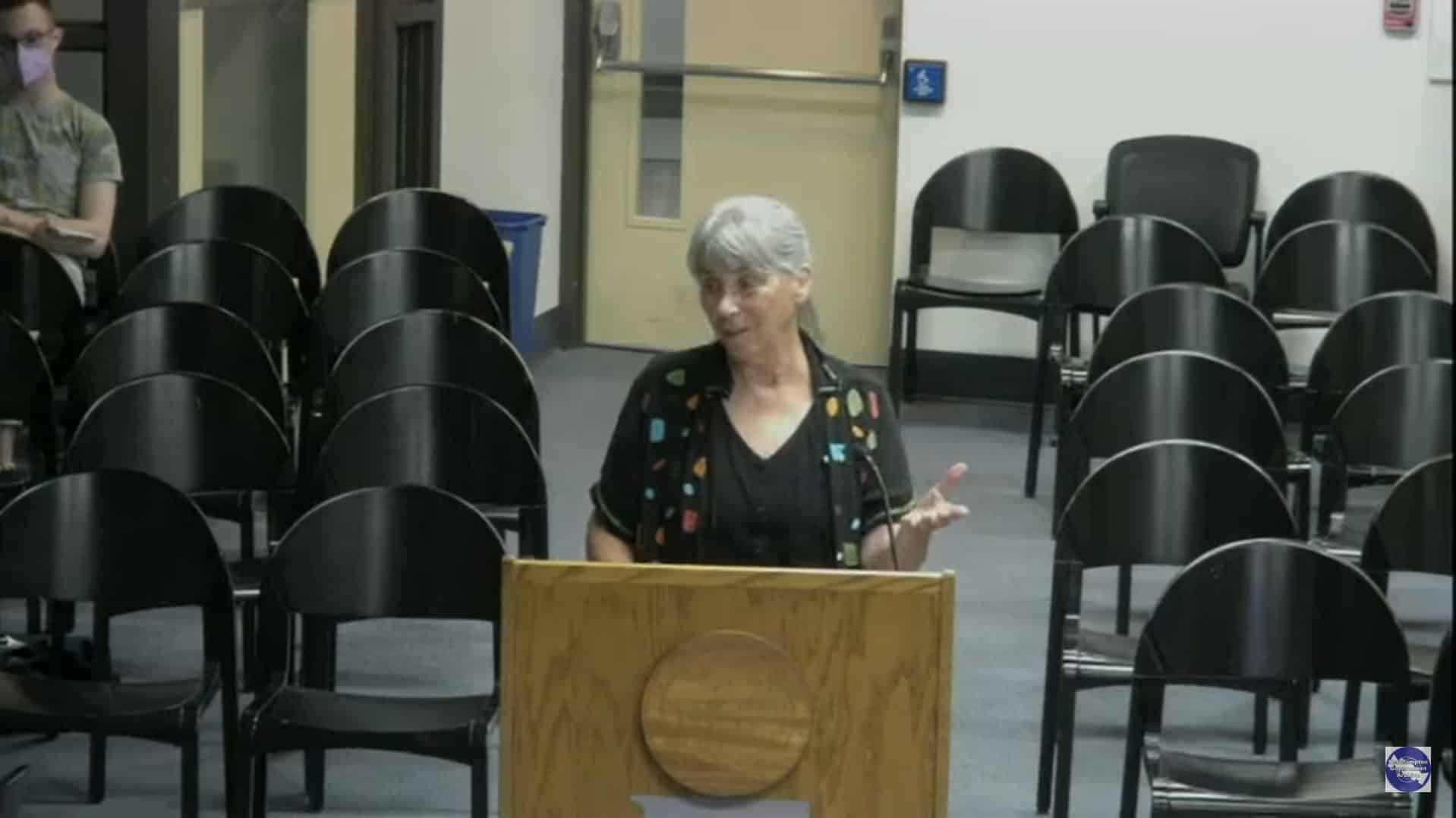Former School Committee member Meg Robbins talks about the state aid resolution in front of the City Council on Sept. 19.
Photo credit: Northampton Open Media
NORTHAMPTON — A resolution imploring the state to increase aid for Northampton Public Schools by $3 million annually is on the verge of passing the City Council.
On Sept. 19, Ward 4 City Councilor Jeremy Dubs and Ward 6 City Councilor Marianne LaBarge presented a resolution they sponsor to the full council that asks the state to change the funding formula for school choice tuition and charter school tuition. Ward 3 City Councilor Quaverly Rothenberg also sponsored the resolution but was not present during the Sept. 19 meeting.
According to the resolution, the $3 million annual increase the city is asking for is the amount of school choice and charter schools that has been annually deducted from Northampton’s state school aid as of fiscal year 2024.
“I’m happy to be a sponsor on [the resolution],” Dubs said. ‘I think it gives us the opportunity to ask the state to put more money towards charter schools so that we can spend our own local tax dollars on our public schools, which I think will be really helpful and really important and impactful for the future of Northampton schools and their children … and hopefully, our future budget seasons.”
The resolution was presented after what was a tumultuous FY25 budget season in which the City Council accepted a significant increase to the school budget from the previous fiscal year, and yet the budget still led to cuts to approximately 20 positions across the district.
The City Council hopes to shine a light on the school funding inequity throughout the commonwealth and its effects on places like Northampton, which “has lost millions of state aid dollars in inequitable Chapter 70 funding,” according to the resolution’s language.
“We care about our families and our children, and I think that this will make some movement here for our city of Northampton,” said LaBarge.
The presentation of this resolution came a few days after a petition started by former School Committee member Meg Robbins circled the Northampton community asking people to sign in support of additional state aid. As of press time, 65 people have signed the petition, which will eventually go in front of the School Committee at one of its future meetings.
According to Jesus Leyva, a current Greenfield resident who worked with Robbins on the petition, the petition joins similar ones in Amherst and Greenfield that have each reached over 100 signatures, as of press time. Robbins said she and Leyva are working with concerned residents in Franklin and Hampshire counties to advocate for this additional funding.
“There are 211 districts across the state of Massachusetts who are minimum aid districts in this year and are not getting additional funding from the Student Opportunity Act this year,” Leyva said. “It’s not a small communities issue. This is a statewide issue that affects a wide variety of communities.”
According to the Northampton resolution, under Massachusetts’ current funding system for schools, for each student who leaves their public school district for a charter school, almost all the city’s per capita public-school funding follows the student to the charter school, including the percentage Northampton provides its public schools above what the commonwealth legally allocates.
The resolution states that because students “choice out” from different classrooms, grades and schools across a district, the costs to operate the public school district remain relatively unchanged, making it difficult for districts to proportionally shrink spending in response to declining enrollment.
“The resolution is there to ask our state legislators to work with this fundamental idea that we’d be reimbursed for the cost of sending children out of district that are not in our public schools,” Robbins said.
Because of this stagnation of state aid, the burden to allocate sufficient funding to schools weighs heavier on a minimum state aid municipality like Northampton, especially as education costs continue to rise.
According to the resolution, Northampton received just under $8 million in Chapter 70 funding in 2023 compared to $8 million in 2002, despite “a 20-year growth in district facility, insurance, transportation and personnel costs.”
“This results in local budgets that are challenged to maintain services and frequently lead to staffing cuts,” reads the resolution. “These cuts further perpetuate a downward spiral caused by loss of students to charter schools and wealthier school districts and a continued decline in school funding, loss of programming and increased demand for support staff and services as personalized student needs go unmet in larger classrooms with fewer staff.”
The few councilors who spoke during the Sept. 19 council meeting were supportive of the resolution.
“I think this is an important contribution to the advocacy that’s so needed to fix the Chapter 70 funding formula,” said City Council President Alex Jarrett.
The council will vote on the resolution during its Oct. 1 meeting.



